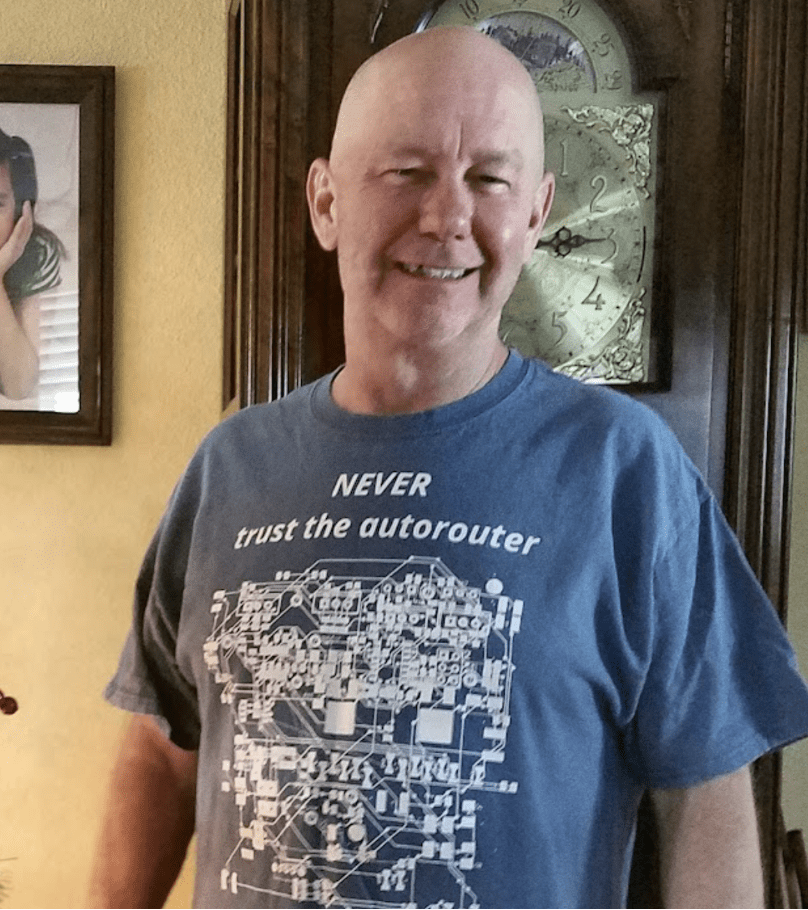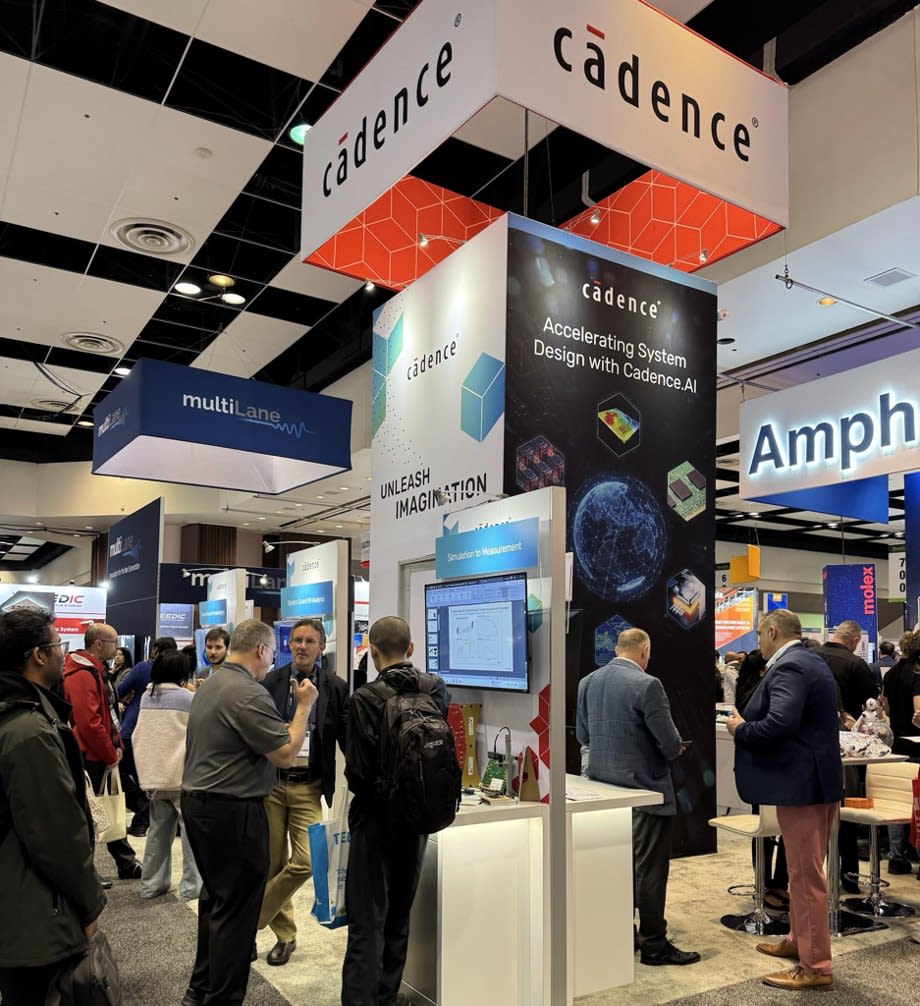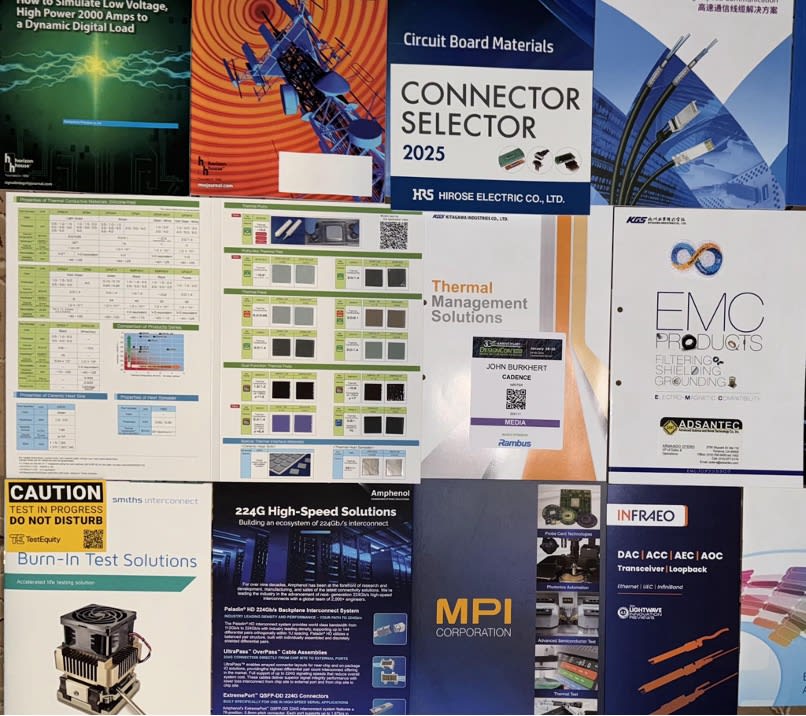The 2025 Iteration of DesignCon - People and Progress
The title sponsor for this year's DesignCon was Amphenol. Aside from connectors, they also provide complete cables, sensors and antennas among other things. They even offer to design bespoke rigid-flex circuits to fit your needs. Vertical integration aside, this is a connector company at its core and that theme was strong at DesignCon. They have a tradition of drawing a lot of connector vendors to exhibit and demonstrate their wares.
If that was all they had, it would be a cozy convention. DesignCon is much more. Vendors came in with complete laboratories to show off the latest technology. The huge, elaborate booths were complemented by numerous small exhibitors wedged into just about every available crevice of the sprawling Santa Clara Convention center.
You know what else was there? People. There were people on both sides of the table interacting and networking with each other. I walked through the door and within a minute was having a conversation with Arjun Tambe that got into my perspective on auto-routers. Arjun was working at one of those smaller displays with his AI startup.

Figure 1. Go ahead, ask me about autorouters. In short, using one can give you a feel for how the job is broken down into smaller tasks that are batched into a sequence. Then there's the "cost" of a via compared to a meander as you route counter to the prevailing flow on a layer. Priorities change as you go. A good "do file" will capture the nuanced goals from beginning to the end. Along the way, you could adopt the strategy that evolves for manual routing. Image Credit: Author
Other folks I touched base with included two of my favorite former Google engineers and a former manager who changed the way I looked at tape-outs. Imagine if your documentation package is all the vendor is ever going to get from you. There will be no DFM queries for you to approve or negotiate.
That one-way, one-time communication should be sufficient to go out to fabrication and assembly. Chris Cole set that bar for me and I tried to live up to it from around Y2K until I retired earlier this year. His high expectations had a profound impact on my approach for the following quarter century.

Figure 2. The Cadence booth was bustling on Wednesday. The crowd overall seemed a little thinner on Thursday. Image Credit: Author
All of this happened on Wednesday before I fell in with Juan C. Frias, who has been a super-fan of mine since I started writing. We were joined by Stephen Chavez and we wandered around until we met up with Judy Warner, then Lee Ritchey and Daniel Beeker to name a few. We were something of a spectacle.
I was surprised to see Professor Eric Bogatin at the Cadence booth. He was signing "Rule 9" caps for those hopefuls who stood in a long line. I have to say that I'm not in on the joke and I was already wearing a cap representing my home-town Sunyyvale's Sierra Circuits. My cap was decorated with the "I'm Board" theme. One thing that I was not was "bored".
Wandering up and down the fourteen aisles provided plenty of opportunities to geek out on the leading edge technology. Are you ready for PCIe version 6? How about seven? Vendors who don't want to be left behind have to live on the leading edge. It was all there at TE Electronics, Samtec, Lotes, Molex and so many others.

Figure 3. Collecting brochures is one of my favorite parts of any convention. Back in the day, a PCB Designer would be judged on the number and type of catalogs they brought to work. I still reach for the printed material as a matter of course. Image Credit: Author
Another featured vendor was Hirose, (pronounced H'RowSee). This company occupies a number of synaptic connections residing within my head. Their Zero Insertion Force (ZIF) connectors are practically the default for flex circuits. They are also some of the most complicated footprints to generate.
The connector itself is easy but the staggered, interlocking gold fingers are intricate and varied. I'm glad that we can download the connector geometry because otherwise, it could cost a day to create and verify the mating footprints.
So Thursday found me sitting in on a couple of presentations and making another run through the exhibits. My focus moved from connectors to everything else. I met a few more people and shared my information with vendors even though I'm not a buyer or even one to recommend vendors. Having a Press Pass around my neck makes them a little less eager to ask for my details.
I would have liked to see more familiar faces (and new ones) that day. It's great to see all of the activity around this convention on social media. Meanwhile, I collected a nice little stack of company literature so I can stay up with trends. This will hold me over until PCB West returns to that very same location at the end of September. Hope to see you there.